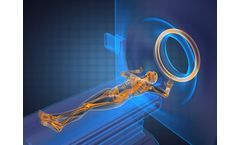Brain Structure Articles & Analysis
7 articles found
Introduction Neurologic complications are frequently reported in COVID-19, but our understanding of their pathophysiologic causes and neuroanatomical correlates is limited. While several structural brain imaging findings have been reported in COVID-19, including non-spherical signal abnormalities on Susceptibility-Weighted Imaging (SWI), conventional perfusion ...
Carrie Fisher was an American actress most well known for her role as Princess Leia in the Star Wars films (1977-1983 and 2015-2019). She was the daughter of singer Eddie Fisher and actress Debbie Reynolds. Carrie Fisher wrote the semi-autobiographical book Postcards from the Edge and the autobiography Wishful Drinking, which she turned into a one-woman stage show. She was open throughout her ...
Bipolar disorder is thought to be caused by a combination of genetics, exposure to stress, and differences in brain structure. It is typically treated with mood stabilizers, antipsychotics, and antidepressants. ...
Pharmacotherapy, talk therapy, and support group-based therapy are feasible, but relapse is common, mainly due to limited knowledge of brain circuit dysfunction behind AUD. Scientists know that promoting the relapse of alcohol withdrawal symptoms, including a rise in anxiety, is caused at least in part by the release of stress molecules in the brain, such as ...
In particular, a clearer understanding of the changes in brain structures that could predict treatment success. Previous studies have reliably demonstrated the involvement of the insula as well as the thalamus and hippocampus. However, there is still room to further ascertain the relationship between brain region activation/deactivation by tVNS ...
MRI Magnetic resonance imaging (MRI) is a diagnostic procedure that uses a combination of a very large magnet, radio waves, and a computer to produce detailed, cross-sectional, and three-dimensional images of organs and structures within the body. An MRI scan is a valuable diagnostic tool that can show injuries or other anomalies that cannot be seen in a CT scan or X-ray. ...
Scientists at Cornell University developed a technique for imaging the brain of an adult zebrafish, with the goal of better understanding human brain disorders. ...






